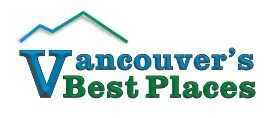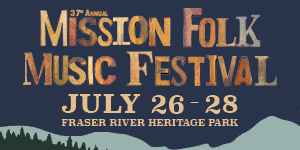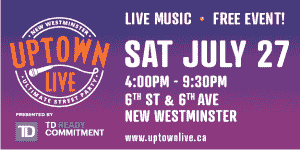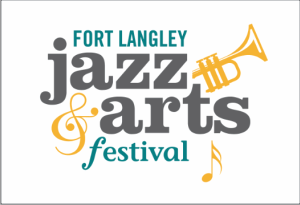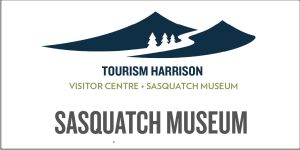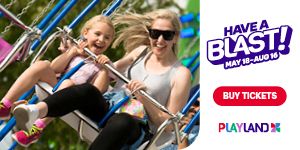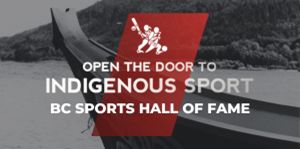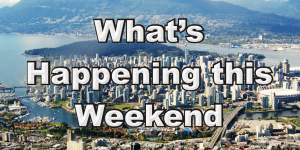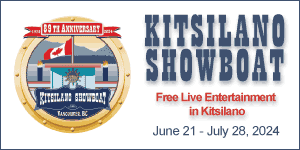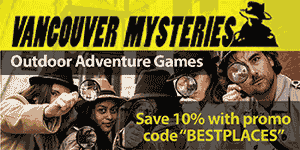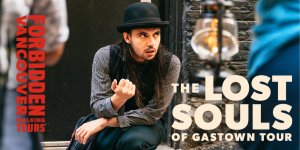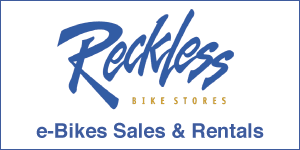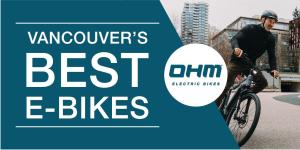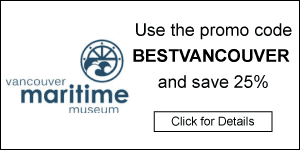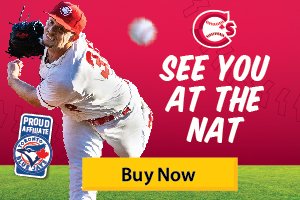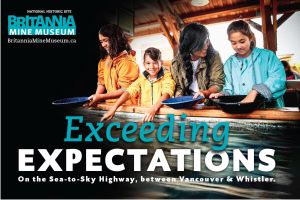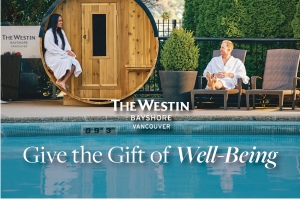The BC provincial election in 2020 was on October 24th. Given the state of the world and COVID-19, this was a British Columbia election like no other!
NDP WIN MAJORITY
The NDP Party won a majority government with 55 out of the total of 87 seats.
What’s in this Article?
This article contains general information about the 2020 BC election including links to information about when and where you could vote, who the major parties and their leaders were, why there was an election, and how this election was different. It also contains a list of candidates running in the different ridings in Metro Vancouver and the Fraser Valley.
Note: Vancouver’s Best Places does not endorse any one party or candidate. Also, our list of candidates is not an exhaustive list and details may change. See official party websites or the Elections BC website for exact details.
2020 BC Provincial Election
On September 21st, 2020, BC Premier John Horgan announced that British Columbia’s next election will be on Saturday, October 24th. This was just three and half years after the last election (which happened on May 9th in 2017). It was also one year before the current election needed to be (given that by law it has to take place on or before October 16th in 2021).
With just 33 days between the date of calling the 2020 election and the actual election day, politicians were busy! They were knocking on doors, putting up signs and appearing on radio, TV and other media non-stop for the next little while.
In the last BC provincial election 61.2% of eligible voters cast ballots. This was higher than average. The time before voter turnout was 57.1% and the time before that it was 55.1%. In this most recent election, voter turnout was just 52.4%, which made it a record low.
When and Where Can You Vote?
People could vote in person during the advanced voting period which ran from Thursday, October 15th, until Wednesday, October 21st. They could also vote on Election Day which was on Saturday, October 24th. Voting stations were open on all of these dates between 8:00 am and 8:00 pm.
All eligible voters could vote by mail if they wished. To do so you had to request a voting package via the Elections BC website or by calling 1.800.661.8683.
To vote in British Columbia you have to be a resident of BC and at least 18 years of age.
Who are the Parties and their Leaders?
The three main political parties are the New Democratic Party (NDP), BC Liberal Party and Green Party. The NDP is currently the governing party and the Liberals are the Official Opposition. The Greens, with just two seats, hold the balance of power in the current minority government.
The leader of the NDP is John Horgan (who is also currently the Premier of the province and leader of the government). Andrew Wilkinson was the leader of the Liberals (but he resigned after the election). Sonia Furstenau is the leader of the Green Party (as of September 14th, 2020).
In addition to being the leaders of their respective parties, Andrew Wilkinson represented the riding of Vancouver-Quilchena and John Horgan represented the riding of Langford-Juan de Fuca (i.e., in Greater Victoria and the Gulf Islands). Sonia Furstenau represented the Cowichan Valley (which is on Vancouver Island between Victoria and Nanaimo).
There are 87 seats in the Provincial Legislature. Whoever controls the majority (so at least 44) gets to form the government. Up until prior to this past recent election, as of September 2020, the NDP had 41 seats, the Liberals had 41 and the Greens had 2. There were also 2 independent MLAs and one vacant seat. Because the Greens have supported the NDP in a minority government, and between them they controlled over 50% of the seats, the NDP had been the governing party.
The NDP only had the support of the majority of MLAs by the tiniest of margins. This, and the fact that they were doing well in opinion polls and hoped to increase their number of seats, explains in part why the NDP called the early election.
Why was There an Election?
Why did BC have an election when it did? The province didn’t have to hold an election until the third Saturday of October 2021, so not until more than a full year from now. The Premier is allowed to call an election early, however, which is what has happened. This is not unusual. It often occurs when a government is popular and thinks that by holding an election early, at a time of their choosing, they can increase their chances of getting re-elected, and with more seats, and hopefully with a majority.
Up until this past election the NDP formed a minority government and needed the support of the Green Party to stay in power. John Horgan at the time was the most popular premier in Canada, which made it an opportune time for him and the NDP to call an election.
Critics argued that the fall of 2020 wasn’t a good time for an election given that the world was in the middle of a pandemic and cases of COVID-19 were on the rise. They argued that calling an election was in the best interests of the NDP, but not for the province and the general population. Many argued that an election would simply distract the government from the much more important issue of addressing the current health and economic crisis.
The NDP, on the other hand, argued that it was a good time for an election because the coronavirus was going to be around for a long while, and it would likely only get worse. It’s better having people focusing on the election and voting early than it would be the following year. They also argued that an election that resulted in a strong majority government would help whoever the new government was to better address the challenges that lay ahead because of COVID-19.
Regardless of whether it was a good time for an election, and whether people wanted one or not, an election happened.
Candidates in the Lower Mainland
The following is a comprehensive list of 2020 election candidates of the major political parties organized by electoral district.
Note: Current MLAs running again are marked with a “*”. Information below is subject to change. Visit the official website of each political party for the most up-to-date information.
Click on the blue links to skip to your area of residence.
City of Vancouver | Burnaby & New Westminster | North Shore | Richmond & Delta | Surrey | Coquitlam & Port Coquitlam | Fraser Valley
City of Vancouver
Below is a list of the ridings within the City of Vancouver and the various main candidates from the respective parties. Incumbent candidates (who are the current MLAs) are marked with an asterisk (“*”).
Vancouver Fairview
Vancouver’s Fairview is the region just north of Queen Elizabeth Park and VanDusen Gardens, and directly south of False Creek. It also includes the South Granville neighbourhood.
- Green: Ian Goldman
- Liberal: George Affleck
- Libertarian: Sandra Filosof-Schipper
- NDP: George Heyman*
Vancouver False Creek
The False Creek area in Vancouver directly surrounds False Creek water, extending west until Burrard Street and east until Main Street.
- Conservative: Erik Gretland
- Green: Maayan Kreitzman
- Liberal: Sam Sullivan* – served as the mayor of Vancouver from 2006 until 2009.
- Libertarian: Naomi Chocyk
- NDP: Brenda Bailey
Vancouver Fraserview
Vancouver’s Fraserview district is around the Fraserview Golf Course, north of the Fraser River. It spans from Boundary Road to Fraser Street, and goes as far as East 41st Avenue.
- Green: Francoise Raunet
- Liberal: David Grewal
- NDP: George Chow*
Vancouver Hastings
The Vancouver Hastings area forms a rectangle south of the Burrard Inlet. It is east of Commercial Drive and west of Boundary Road.
- Communist: Kimball Cariou
- Green: Bridget Burns
- Liberal: Alex Read
- Libertarian: Gölök Z Buday
- NDP: Niki Sharma
Vancouver Kensington
Vancouver’s Kensington district is almost centred around Kensington Park, as it begins south of Kingsway. This area includes the Mountain View Cemetery, which is east of Queen Elizabeth Park, and it ends at the corner of East 49th Avenue and Nanaimo Street.
- Green: Nazanin Moghadami
- Liberal: Paul Lepage
- NDP: Mable Elmore*
- Independent: Salvatore Vetro
Vancouver Kingsway
The Kingsway region in Vancouver includes the Renfrew Heights neighbourhood and goes as far west as Commercial Drive. It borders the north west corner of Burnaby’s Central Park.
- Green: Scott Bernstein
- Liberal: Cole Anderson
- Libertarian: Karin Litzcke
- NDP: Adrian Dix*
Vancouver Langara
The northern part of Langara’s district wraps Queen Elizabeth Park and VanDusen Gardens, and spans south until the Fraser River. It includes the South Vancouver region and about half of the Sunset neighbourhood.
- Green: Stephanie Hendy
- Liberal: Michael Lee*
- Libertarian: Paul Matthews
- NDP: Tesicca Chi-Ying Truong
Vancouver Mount Pleasant
East of Hastings district, Vancouver’s Mount Pleasant region includes Gastown, Strathcona and Downtown Eastside. It is north of Kingsway and goes until the Burrard Inlet.
- Green: Kelly Tatham
- Liberal: George Vassilas
- NDP: Melanie Mark*
Vancouver Point Grey
Vancouver’s Point Grey district envelopes UBC and the neighbouring regions of West Point Grey and Kitsilano. Apart from the university property, this electoral district does not extend south of West 16th Avenue.
- Green: Devyani Singh
- Liberal: Mark Bowen
- NDP: David Eby*
Vancouver Quilchena
The Quilchena region begins west of Granville Street and goes as far north as West 16th Avenue. It includes the Kerrisdale, Arbutus Ridge and Dunbar Southlands neighbourhoods, as well as the eastern portion of Shaughnessy.
- Green: Michael Barkusky
- Liberal: Andrew Wilkinson*
- NDP: Heather McQuillan
Vancouver West End
Vancouver’s West End area is east of Gastown and Yaletown, as it spans from Burrard Street to Coal Harbour and Stanley Park.
- Green: James Marshall
- Liberal: John Ellacott
- Libertarian: Kim McCann
- NDP: Spencer Chandra Herbert*
Burnaby & New Westminster
Below is a list of the ridings within the cities of Burnaby and New Westminster and the various main candidates from the respective parties. Incumbent candidates (who are the current MLAs) are marked with an asterisk (“*”).
Burnaby Deer Lake
As its name suggests, Burnaby’s Deer Lake electoral district surrounds Deer Lake. More specifically, it begins west of Boundary Road, and includes Central Park, Metrotown, and the neighbourhoods of Garden Village, Buckingham Heights and Cascade Heights.
- Green: Mehreen Chaudry
- Liberal: Glynnis Hoi Sum Chan
- NDP: Anne Kang*
Burnaby Edmonds
The Edmonds district in Burnaby is south of Imperial Street and just east of Boundary Road. It extends all the way to 4th Street, and covers the South Slope, Suncrest and Middlegate areas.
- Green: Iqbal Parekh
- Liberal: Tripat Atwal
- NDP: Raj Chouhan*
Burnaby Lougheed
Burnaby’s Lougheed region includes neighbourhoods south and west of SFU and Burnaby Mountain. It spans from Kensington Avenue to North Road and includes Westridge, Lochdale and Montecito.
- Green: Andrew Williamson
- Liberal: Tariq Malik
- Libertarian: Dominique Paynter
- NDP: Katrina Chen*
Burnaby North
The Burnaby North electoral district is east of North Boundary Road and west of Kensington Avenue. It borders the tip of Deer Lake Park and includes the Burnaby Heights, Willingdon Heights, Brentwood and Capitol Hill neighbourhoods.
- Green: Norine Shim
- Liberal: Raymond Dong
- NDP: Janet Routledge*
New Westminster
The New Westminster district is south of 10th Avenue and extends until the Fraser River. It envelopes areas such as Sapperton, Connaught Heights, Eastburn, Glenbrooke North and more.
- Conservative: Benny Ogden
- Green: Cyrus Sy
- Liberal: Lorraine Brett
- Libertarian: Donald Wilson
- NDP: Jennifer Whiteside
North Shore
Below is a list of the ridings on Vancouver’s North Shore and the various main candidates from the respective parties in each district. Incumbent candidates (who are the current MLAs) are marked with an asterisk (“*”).
North Vancouver Lonsdale
Lonsdale is a large district in North Vancouver that begins east of Ambleside Park and extends as far as the Trans-Canada Highway just north of the Iron Workers Memorial Bridge. It includes areas such as Lower Lonsdale, Lonsdale Quay and Keith-Lynn.
- Green: Christopher Hakes
- Liberal: Lyn Anglin
- NDP: Bowinn Ma*
North Vancouver Seymour
The Seymour district in North Vancouver is east of Capilano Lake and extends towards the Burrard Inlet in both south and east directions. This land includes Upper Lonsdale, Lynn Valley and more.
- Green: Harrison Johnston
- Liberal: Jane Thornthwaite*
- Libertarian: Clayton Welwood
- NDP: Susie Chant
West Vancouver Capilano
Capilano Lake is at the centre of this West Vancouver district. It spans west of Lonsdale Avenue and east of 28th Street, and includes Cedardale, Park Royal, Hollyburn, and Dundarave areas.
- Green: Rasoul Narimani
- Independent: Anton Shendryk
- Liberal: Karin Kirkpatrick
- NDP: Amelia Hill
West Vancouver Sea to Sky
The West Vancouver Sea to Sky region mainly includes the small area west of 28th Street. This is namely the West Vancouver area of the Lower Mainland.
- Green: Jeremy Valeriote
- Liberal: Jordan Sturdy*
- NDP: Keith Murdoch
Richmond & Delta
Below is a list of the ridings in Delta and Richmond and the various main candidates from the respective parties in each district. Incumbent candidates (who are the current MLAs) are marked with an asterisk (“*”).
Delta North
Delta’s North district is comprised of Annacis Island and a select area to its east. This includes neighbourhoods of Sunshine Hills and North Delta up until 120th Street.
- Green: Neema Manral
- Liberal: Jet Sunner
- NDP: Ravi Kahlon*
Delta South
The Delta South region is just north of the American border. Its most significant portion is the island that includes Ladner, Tsawwassen and other areas south of the Fraser River.
- Green: Peter Van Der Velden
- Liberal: Ian Paton*
- NDP: Bruce Reid
Richmond North Centre
Richmond’s North Centre district includes the area surrounding the Vancouver International Airport. It also extends south towards Blundell Road and areas along both sides of the Fraser River.
- Green: Vernon Wang
- Liberal: Teresa Wat*
- NDP: Jaeden Dela Torre
Richmond Queensborough
The Queensborough region covers the eastern half of Richmond, which begins east of No. 3 Road. It continues east to include the island part of New Westminster, and north to include Mitchell Island.
- Conservative: Kay Hale
- Green: Earl Einarson
- Liberal: Jas Johal*
- NDP: Aman Singh
Richmond South Centre
Richmond’s South Centre district is south of Westminster Highway and west of No. 4 Road. It spans the area until the intersection of No. 2 Road and Francis Road, although excluding Minoru Park.
- Liberal: Alexa Loo
- NDP: Henry Yao
Richmond Steveston
The Steveston area of Richmond is south of Blundell Road and extends to the Fraser River. It includes Steveston, Golden Village, Seafair, and other neighbourhoods in the region that are west of No. 3 Road.
- Independent: Vince Li
- Liberal: Matt Pitcairn
- NDP: Kelly Greene
Surrey
Below is a list of the ridings in the City of Surrey and the various main candidates from the respective parties in each district. Incumbent candidates (who are the current MLAs) are marked with an asterisk (“*”).
Surrey Cloverdale
Surrey’s Cloverdale district is south of Tynehead Regional Park and north of Highway 10. It spans from 152nd Street to 196th Street, and includes Anniedale, Port Kells and East Clayton.
- Conservative: Aisha Rehana Bali
- Green: Rebecca Smith
- Independent: Marcella Williams
- Liberal: Marvin Hunt*
- NDP: Mike Starchuk
Surrey Fleetwood
The Fleetwood riding is south of 100th Avenue and north of 72nd avenue in Surrey. It includes most neighbourhoods in Fleetwood and Johnson Heights that are between 140th Street and 160th Street.
- Green: Dean McGee
- Liberal: Garry Thind
- NDP: Jagrup Brar*
Surrey Green Timbers
The Green Timbers district in Surrey includes Green Timbers Urban Forest and extends southwest to the corner of 120th Street and 75a Avenue. Neighbourhoods west of Bear Creek park are also included.
- Liberal: Dilraj Atwal
- NDP: Rachna Singh*
Surrey Guildford
Surrey’s Guildford area is the wide stretch of land between 140th Street and the west border of Langley. It includes Barnston Island, Tynehead Regional Park, Fraser Heights and Guildford.
- Green: Jodi Murphy
- Independent: Samuel Kofalt
- Liberal: Dave Hans
- NDP: Garry Begg*
Surrey Newton
The Newton area in Surrey is south of 80th Avenue and north of 64th Avenue. It includes Strawberry Hill and Newton neighbourhoods that are between 120th Street and 144th Street.
- Green: Asad Syed
- Liberal: Paul Boparai
- NDP: Harry Bains*
Surrey Panorama
Surrey’s Panorama region is north of Colebrook Road and south of 76th Avenue. It includes the areas of East Newton, Panorama Ridge and Sullivan.
- Liberal: Gulzar Cheema
- NDP: Jinny Sims*
- Vision: Sophie Shrestha
Surrey South
The South electoral district in Surrey is east of 128th Street until 196th Street. It primarily includes neighbourhoods between 56th Avenue and 0 Avenue. For example, Elgin, Rosemary Heights and Grandview Heights in South Surrey are all in this district.
- Green: Tim Ibbotson
- Liberal: Stephanie Cadieux*
- NDP: Pauline Greaves
Surrey Whalley
The Surrey Whalley region makes up the west side of Surrey along the Fraser River. It is north of 96th Avenue and mostly west of 140th Street. It includes South Westminster, Port Mann, Bridgeview and Saint Helen’s Park neighbourhoods.
- Communist: Ryan Abbott
- Liberal: Shaukat Khan
- NDP: Bruce Ralston*
- Vision: Jag Bhandari
Surrey White Rock
White Rock electoral district makes up the south west corner of Surrey, as it begins at 24th Avenue and continues south to the water. The larger neighbourhoods are Crescent and White Rock, although it also stretches to the edge of Highway 99.
- Green: Beverly (Pixie) Hobby
- Independent: Megan Knight
- Liberal: Trevor Halford
- Libertarian: Jason Bax
- NDP: Bryn Smith
Coquitlam, Port Moody & Port Coquitlam
Below is a list of the ridings in the Tri-Cities and the various main candidates from the respective parties in each district. Incumbent candidates (who are the current MLAs) are marked with an asterisk (“*”).
Coquitlam Burke Mountain
The Burke Mountain region in Coquitlam is north of Lincoln Avenue for the most part. It includes Westwood Plateau and Burke Mountain areas, and spans from Balmoral Drive to the Pitt River.
- Green: Adam Bremner-Akins
- Liberal: Joan Isaacs*
- NDP: Fin Donnelly
Coquitlam Maillardville
Coquitlam’s Maillardville is east of North Road and west of the Coquitlam River. It includes Dartmoor, Essondale, Cariboo, Sullivan Heights, and other neighbourhoods between Como Lake Avenue and the Fraser River.
- Green: Nicola Spurling
- Liberal: Will Davis
- NDP: Selina Robinson*
Port Coquitlam
Port Coquitlam is east of the Coquitlam River and stretches until the Pitt River. This region is also south of Victoria Drive, and includes the neighbourhoods of Oxford Heights, Birchland Manor and the southern half of Sun Valley.
- Green: Erik Minty
- Liberal: Mehran Zargham
- Libertarian: Lewis Clarke Dahlby
- NDP: Mike Farnworth*
Port Moody Coquitlam
The Port Moody electoral district is north of Foster Avenue and stretches north towards Buntzen Lake. It includes the areas of Pleasantside and Ioco among others in Port Moody.
- Conservative: Brandon Fonseca
- Green: John Latimer
- Liberal: James Robertson
- Libertarian: Logan Smith
- NDP: Rick Glumac*
Fraser Valley & Maple Ridge
Below is a list of the ridings in the Fraser Valley and Maple Ridge regions and the various main candidates from the respective parties in each district. Incumbent candidates (who are the current MLAs) are marked with an asterisk (“*”).
Abbotsford Mission
The Abbotsford Mission district is east of the Abbotsford-Mission Highway and north of the Trans-Canada Highway. It extends further north and includes areas east of Cedar Street in Mission, as well as Auguston, Ten Oaks, Clayburn and more.
- Christian Heritage: Aeriol Alderking
- Conservative: Trevor Hamilton
- Green: Stephen Fowler
- Liberal: Simon Gibson*
- NDP: Pam Alexis – Current Mayor of Mission
Abbotsford South
The Southern region of Abbotsford is the area south of the Trans-Canada Highway. It is primarily between 248th Street and Boundary Road, but also extends slightly north until South Fraser Way. This district includes Mill Lake, South Clearbrook and other neighbourhoods.
- Christian Heritage: Laura-Lynn Thompson
- Green: Aird Flavelle
- Liberal: Bruce Banman
- NDP: Inder Johal
Abbotsford West
Abbotsford’s West electoral district is north of the Trans-Canada Highway, between 264th Street and Abbotsford-Mission Highway. It includes Matsqui Island, Silverdale, Mt. Lehman, Bradner and more.
- BC Vision: Sukhi Gill
- Green: Kevin Eastwood
- Liberal: Michael de Jong*
- NDP: Preet Rai
- Vision: Sukhi Gill
Chilliwack
The Chilliwack region covers the areas of Chilliwack that are close to the Fraser River, along with neighbourhoods north of Cultus Lake, including Greendale. It spans north east until the point at which Carey Road meets the Fraser River.
- Conservative: Diane Janzen
- Green: Tim Cooper
- Liberal: John Martin*
- Libertarian: Andrew Coombes
- NDP: Dan Coulter
- Independent: Josue Anderson
Chilliwack Kent
Chilliwack’s Kent electoral district is mostly west of the Trans-Canada Highway and east of Carey Road. It extends north and includes Harrison Lake, Agassiz and Hemlock Valley.
- Green: Jeff Hammersmark
- Independent: Jason Lum
- Liberal: Laurie Throness*
- Libertarian: Eli Gagné
- NDP: Kelli Paddon
Langley
The Langley electoral district is pressed against the American border near Campbell Valley Regional Park. It is between 196th Street and 216th Street, and goes as far north as 72nd Avenue. This district includes Fern Ridge, Brookswood, Willowbrook and other close neighbourhoods.
- Conservative: Shelly Jan
- Green: Bill Masse
- Liberal: Mary Polak*
- NDP: Andrew Mercier
Langley East
Langley’s East district spans from 0 Avenue up north until the Fraser River. Its most western edge is 196th Street, but that funnels down to the east of 216th Street until 264th Street. This district includes Fort Langley, McMillan Island and more.
- Conservative: Ryan Warawa
- Green: Cheryl Wiens
- Independent: Tara Reeve
- Liberal: Margaret Kunst
- Libertarian: Alex Joehl
- NDP: Megan Dykeman
Maple Ridge Mission
The Mission region is directly north of the Fraser River and mostly between Stave Lake Street and Golden Ears Provincial Park. It includes Steelhead, Silverhill, Cottonwood are other neighbourhoods in the area.
- Green: Matt Trenholm
- Liberal: Chelsea Meadus
- NDP: Bob D’Eith*
Maple Ridge Pitt Meadows
The Pitt Meadows electoral district is north of the Fraser River and east of the Pitt River. It’s southern tip spans east until 224th Street, along Fern Crescent, and just west of Alouette Lake. This Pitt Meadows district includes Hammond, Haney and Silvervalley neighbourhoods, among others.
- Liberal: Cheryl Ashlie
- NDP: Lisa Beare*
All Candidates Debates in Metro Vancouver
The first debate between the leaders of the three major parties took place on Tuesday, October 13th, between 6:30 and 8:00 pm. The 90-minute event could be watched on Global News. Shachi Kurl from the Angus Reid Institute was the moderator. Participating in the debate were John Horgan (from the NDP), Andrew Wilkinson (from the Liberal Party) and Sonia Furstenau (from the Green Party).
Note: Vancouver’s Best Places does not endorse any one party or candidate. We encourage everyone to educate themselves on the issues and get out to vote.

Other Information
To learn more about the election, including where and how you can vote, see the Elections BC website.
For maps of each electoral district, visit the BC Elections website.
To learn about the major provincial political parties, and to find who is running in your riding, check out the following websites:
For information about other things to do while you’re out and about in the Lower Mainland between now and election day, check out the following:
- October Calendar of Events
- Vancouver Halloween Events
- Adult Halloween Activities in Vancouver
- Lower Mainland Haunted Houses
- Vancouver Autumn Activities
- Lower Mainland Parks & Places in Nature
- Vancouver Rainy Day Activities
